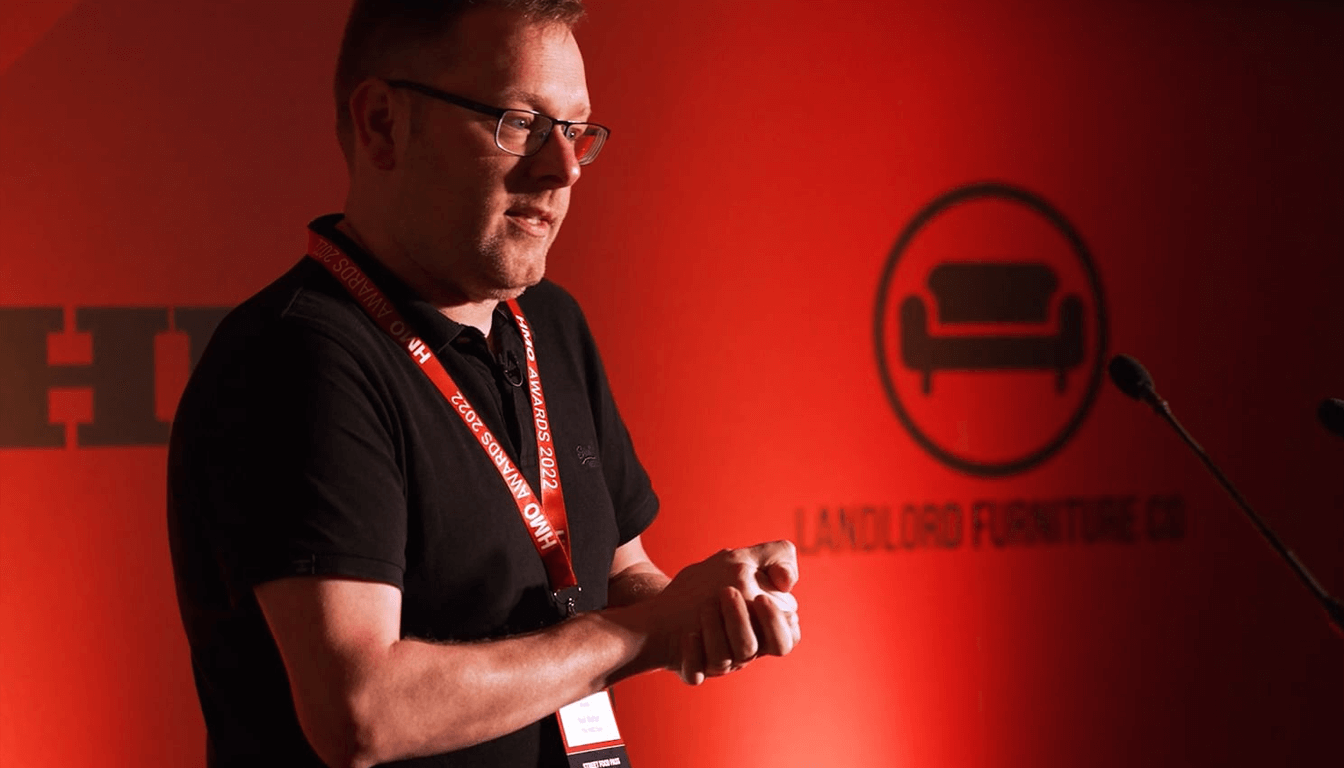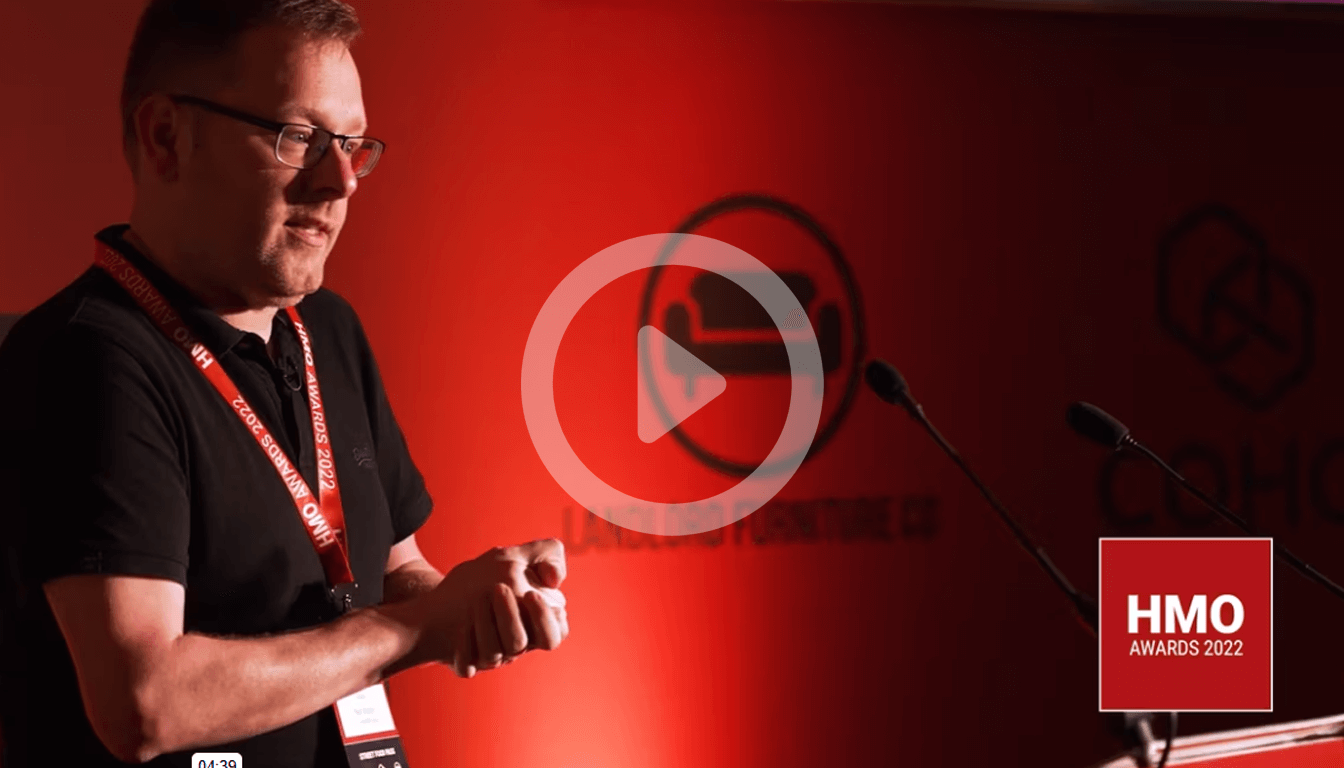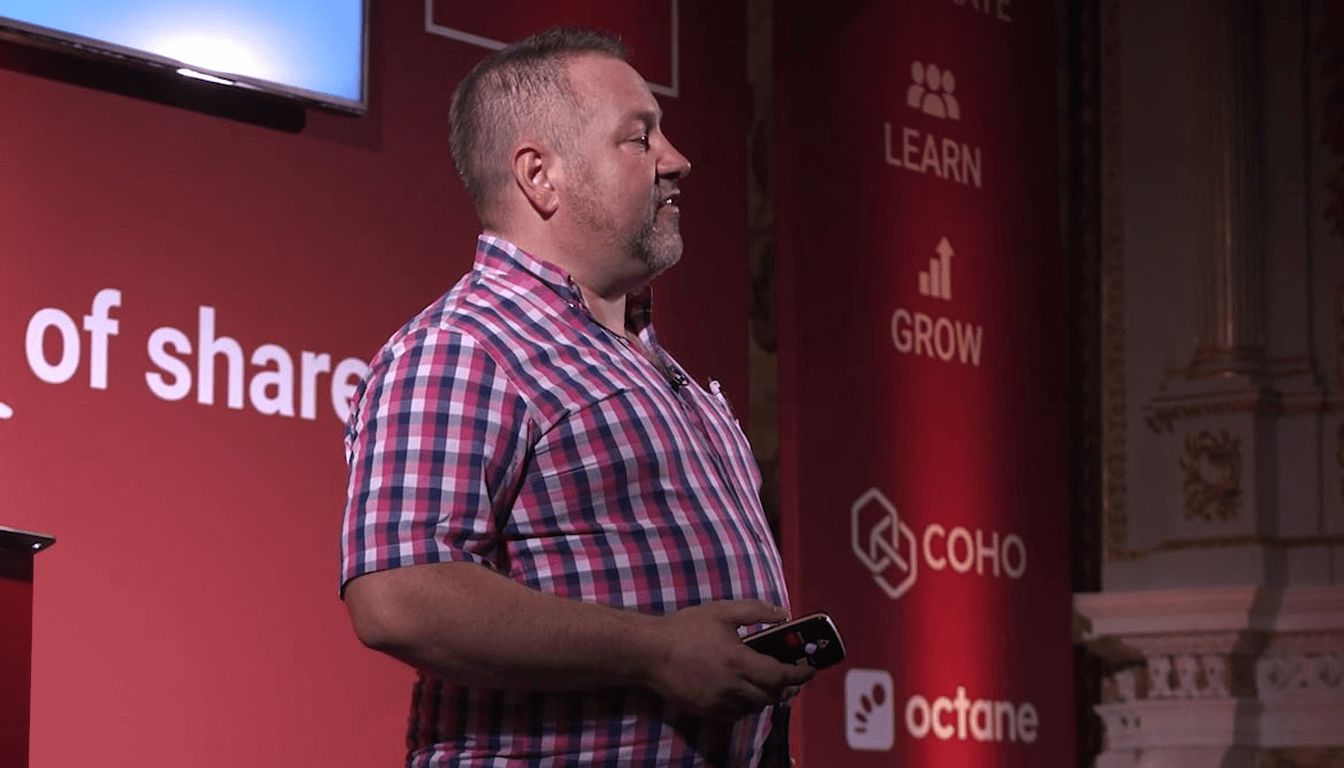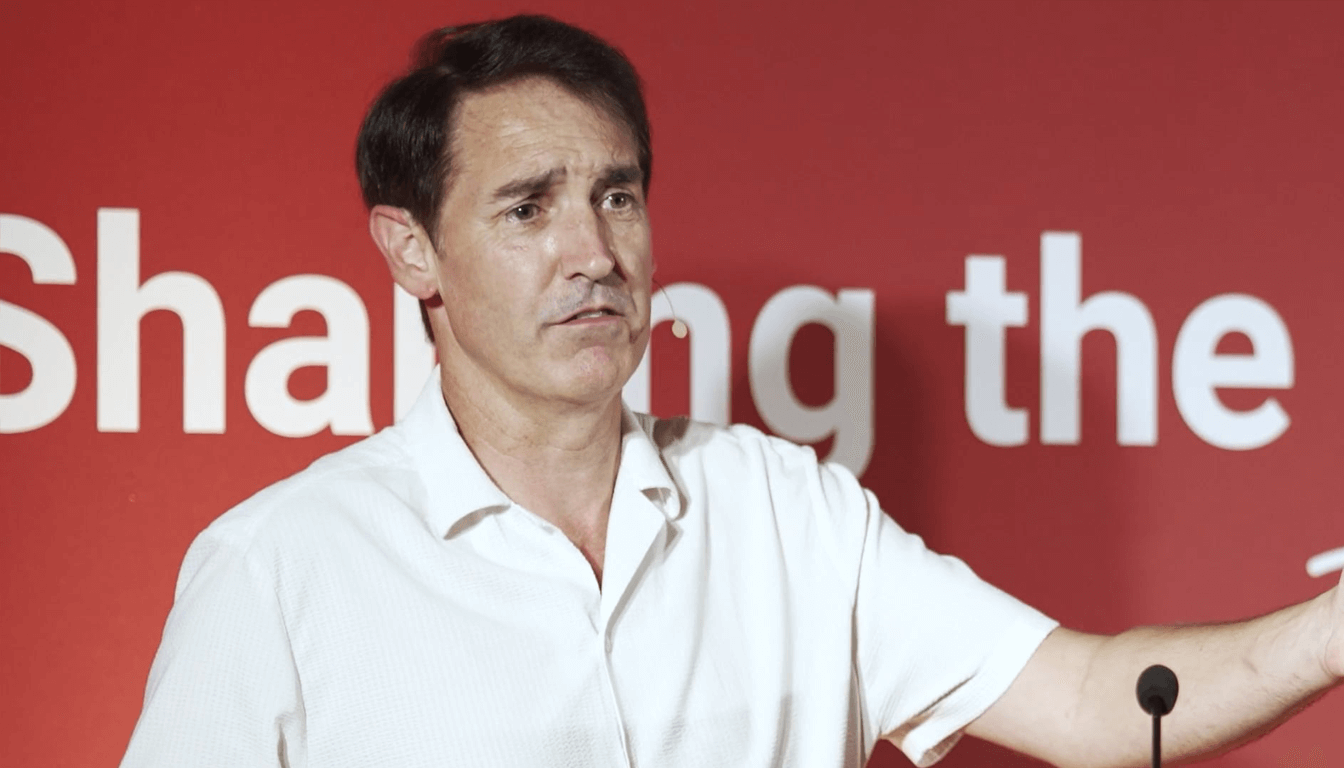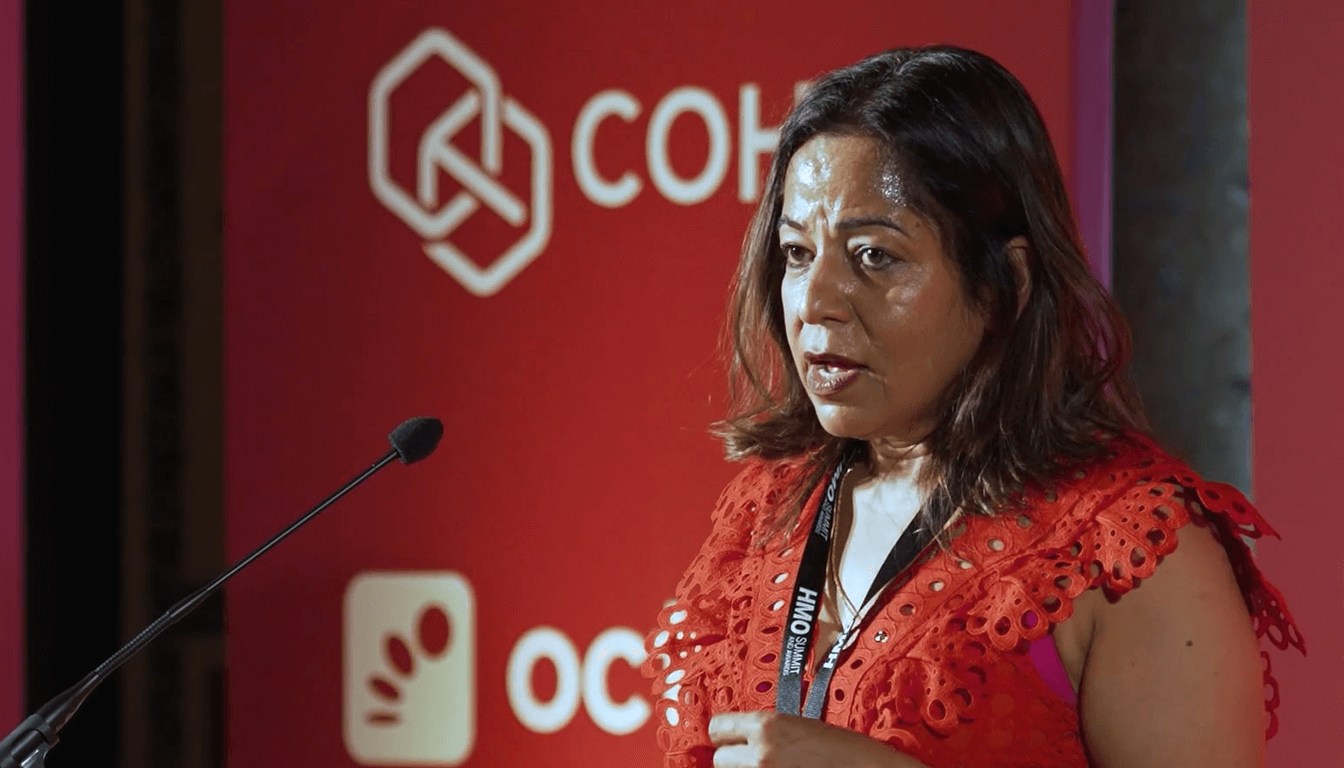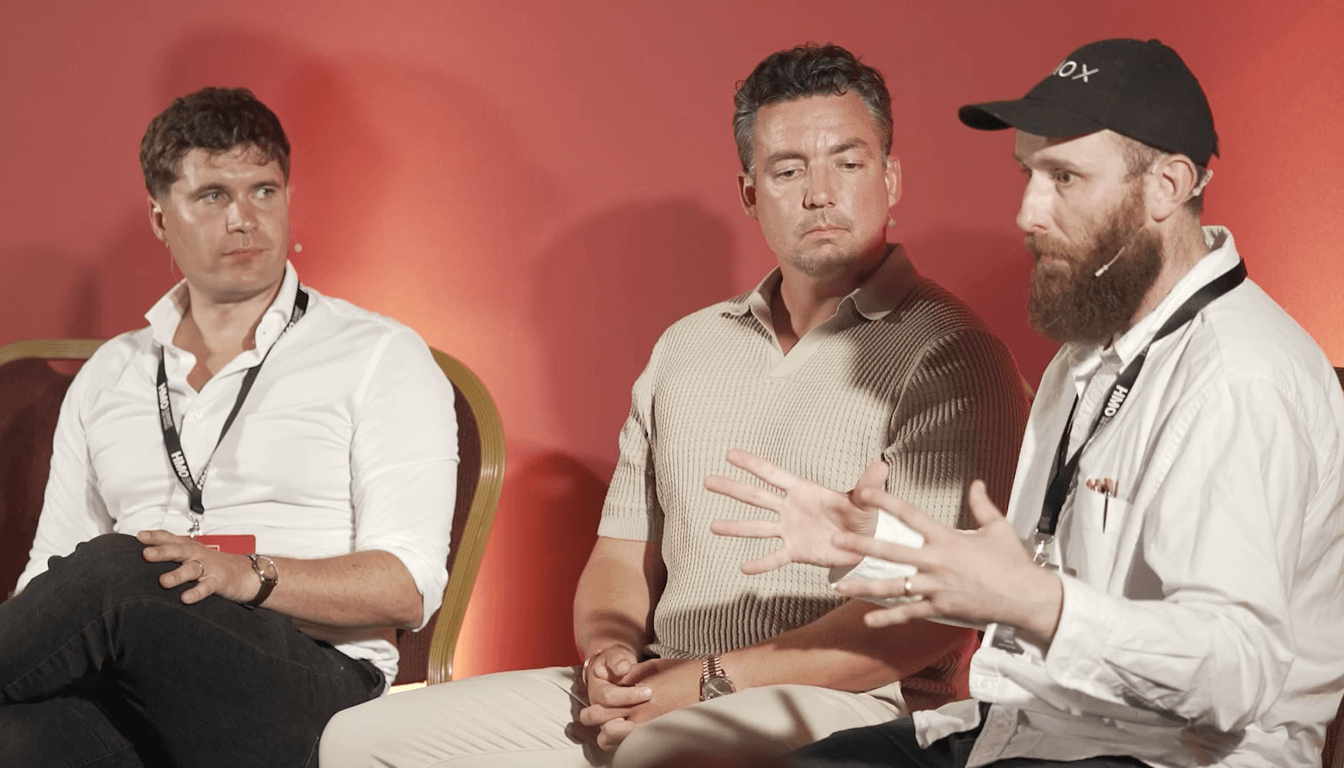Neil Walton, Managing Director of The HMO Guys, shared a remarkable story of growth and learning from the HMO Awards stage. In just four years, his Manchester-based company scaled from managing under 100 rooms to nearly 400 rooms. The journey, fueled by lessons from recruitment and a sharp focus on tenant needs, revealed the core truth of HMOs: when you build homes, not just rooms, everything changes.
Neil began in recruitment, where he observed a pattern — the most successful individuals always had a stable home. That idea stuck with him and eventually became the ethos of his business: HMOs should be homes. He didn’t just want to fill rooms; he wanted to create communities.
The Tenant is King: Why Quality Attracts Quality
One of Neil’s most important principles is treating the tenant as the true customer. Although landlords pay the bills, it’s tenants who drive the cash flow. His team is structured around ensuring the tenant experience is exceptional — from Merrill who oversees tenant matching, to Lucy who manages maintenance (and wheelie bins!), to Charlotte who ensures every property is compliant and safe. This approach has resulted in impressive outcomes:
- 708 tenants placed in four years
- Just one eviction
- Zero tenants currently in arrears
These numbers aren’t an accident. They reflect a deep commitment to tenant experience, compatibility, and compliance.
Tenant Compatibility and Community Building
Neil emphasized the often-overlooked skill of tenant matching. In HMOs, where people live in close quarters, one mismatched personality can disrupt an entire household. That’s why he invests heavily in the matchmaking process — ensuring not just demographic fit (age, gender mix) but also social compatibility.
In smaller houses (4–6 bedrooms), one wrong match can create turnover and discomfort. In larger properties (14–22 beds), there’s more room for diversity, but even then, balance is crucial. Neil’s rule: always mix genders, always mix ages thoughtfully, and always check for shared cultural touchpoints.
Location, Transport, and Employer Ecosystems
Neil revealed the biggest mistakes investors make when developing HMOs: ignoring the end tenant. It doesn’t matter how cheap the property is or how many rooms you can cram in — if tenants can’t reach transport links or find nearby employers, they won’t stay. His process includes detailed assessments of:
- Proximity to transport (must be under 10-minute walk to major links)
- Local supermarkets and urban services
- Presence of key and destination employers
For example, Amazon has two different types of sites in his region. One attracts professionals on graduate schemes, the other attracts industrial workers. Understanding this nuance informs the design, pricing, and marketing of each HMO.
Data-Driven Management for Optimal Occupancy
The HMO Guys operate with a recruitment mindset: pipelines, metrics, and conversion rates. For every new property, Neil and his team know exactly how many viewings and enquiries they need to fill rooms within a certain time frame. This systemized approach enables them to maintain consistent occupancy rates — averaging 97.4% over four years, and currently operating at 100%. When onboarding a new HMO, they ask:
- Who are the tenants likely to be?
- How many enquiries are required to fill it?
- What price point balances cash flow and longevity?
They don’t accept every property — they accept only those that match a demand-backed strategy.
Pricing for Stability, Not Just Cash Flow
A critical insight from Neil’s experience: maximizing rent per month doesn’t always equal maximum ROI. For instance, a room rented at £800 may bring in more cash today but cause turnover every 6 months. A room at £750, with a tenant who stays 18 months, yields far more stable returns.
His advice to landlords: view your HMO as a long-term product. Don’t over-index on short-term yield. Instead, optimize for tenant satisfaction, reduced voids, and consistent income.
Compliance: A Non-Negotiable Ingredient
Neil emphasized that property compliance isn’t just for the council — it’s a trust signal for tenants. His team treats fire safety, certificates, and risk assessments as foundational, not optional. That trust pays off. In a case where a small fire occurred in one of their HMOs, tenants chose to stay because they saw how quickly and professionally it was handled. He recommends every landlord or agent ensure:
- Fire risk assessments are updated and available
- Gas and electrical safety certificates are valid
- Maintenance and incident reporting systems are in place
- Membership in professional redress and CMP schemes
These steps don’t just protect assets — they build long-term relationships with tenants.
Final Thoughts: Invest in People, Not Just Property
Neil closed with a reminder that behind every rent payment is a human being building their life. If we treat HMOs solely as investment vehicles, we lose the soul of what makes shared living work. It’s about relationships, trust, and community. As landlords or agents, we’re not just managing bricks and mortar — we’re managing people’s homes. And if we get that right, not only will our tenants stay, but our investments will thrive.
Want to Learn More? Visit The HMO Guys or connect with Neil Walton to explore how his team can help you transform your HMO portfolio into a high-performing, community-driven success story.
Neil Walton, Managing Director of The HMO Guys, shared a remarkable story of growth and learning from the HMO Awards stage. In just four years, his Manchester-based company scaled from managing under 100 rooms to nearly 400 rooms. The journey, fueled by lessons from recruitment and a sharp focus on tenant needs, revealed the core truth of HMOs: when you build homes, not just rooms, everything changes.
Neil began in recruitment, where he observed a pattern — the most successful individuals always had a stable home. That idea stuck with him and eventually became the ethos of his business: HMOs should be homes. He didn’t just want to fill rooms; he wanted to create communities.
The Tenant is King: Why Quality Attracts Quality
One of Neil’s most important principles is treating the tenant as the true customer. Although landlords pay the bills, it’s tenants who drive the cash flow. His team is structured around ensuring the tenant experience is exceptional — from Merrill who oversees tenant matching, to Lucy who manages maintenance (and wheelie bins!), to Charlotte who ensures every property is compliant and safe. This approach has resulted in impressive outcomes:
- 708 tenants placed in four years
- Just one eviction
- Zero tenants currently in arrears
These numbers aren’t an accident. They reflect a deep commitment to tenant experience, compatibility, and compliance.
Tenant Compatibility and Community Building
Neil emphasized the often-overlooked skill of tenant matching. In HMOs, where people live in close quarters, one mismatched personality can disrupt an entire household. That’s why he invests heavily in the matchmaking process — ensuring not just demographic fit (age, gender mix) but also social compatibility.
In smaller houses (4–6 bedrooms), one wrong match can create turnover and discomfort. In larger properties (14–22 beds), there’s more room for diversity, but even then, balance is crucial. Neil’s rule: always mix genders, always mix ages thoughtfully, and always check for shared cultural touchpoints.
Location, Transport, and Employer Ecosystems
Neil revealed the biggest mistakes investors make when developing HMOs: ignoring the end tenant. It doesn’t matter how cheap the property is or how many rooms you can cram in — if tenants can’t reach transport links or find nearby employers, they won’t stay. His process includes detailed assessments of:
- Proximity to transport (must be under 10-minute walk to major links)
- Local supermarkets and urban services
- Presence of key and destination employers
For example, Amazon has two different types of sites in his region. One attracts professionals on graduate schemes, the other attracts industrial workers. Understanding this nuance informs the design, pricing, and marketing of each HMO.
Data-Driven Management for Optimal Occupancy
The HMO Guys operate with a recruitment mindset: pipelines, metrics, and conversion rates. For every new property, Neil and his team know exactly how many viewings and enquiries they need to fill rooms within a certain time frame. This systemized approach enables them to maintain consistent occupancy rates — averaging 97.4% over four years, and currently operating at 100%. When onboarding a new HMO, they ask:
- Who are the tenants likely to be?
- How many enquiries are required to fill it?
- What price point balances cash flow and longevity?
They don’t accept every property — they accept only those that match a demand-backed strategy.
Pricing for Stability, Not Just Cash Flow
A critical insight from Neil’s experience: maximizing rent per month doesn’t always equal maximum ROI. For instance, a room rented at £800 may bring in more cash today but cause turnover every 6 months. A room at £750, with a tenant who stays 18 months, yields far more stable returns.
His advice to landlords: view your HMO as a long-term product. Don’t over-index on short-term yield. Instead, optimize for tenant satisfaction, reduced voids, and consistent income.
Compliance: A Non-Negotiable Ingredient
Neil emphasized that property compliance isn’t just for the council — it’s a trust signal for tenants. His team treats fire safety, certificates, and risk assessments as foundational, not optional. That trust pays off. In a case where a small fire occurred in one of their HMOs, tenants chose to stay because they saw how quickly and professionally it was handled. He recommends every landlord or agent ensure:
- Fire risk assessments are updated and available
- Gas and electrical safety certificates are valid
- Maintenance and incident reporting systems are in place
- Membership in professional redress and CMP schemes
These steps don’t just protect assets — they build long-term relationships with tenants.
Final Thoughts: Invest in People, Not Just Property
Neil closed with a reminder that behind every rent payment is a human being building their life. If we treat HMOs solely as investment vehicles, we lose the soul of what makes shared living work. It’s about relationships, trust, and community. As landlords or agents, we’re not just managing bricks and mortar — we’re managing people’s homes. And if we get that right, not only will our tenants stay, but our investments will thrive.
Want to Learn More? Visit The HMO Guys or connect with Neil Walton to explore how his team can help you transform your HMO portfolio into a high-performing, community-driven success story.

